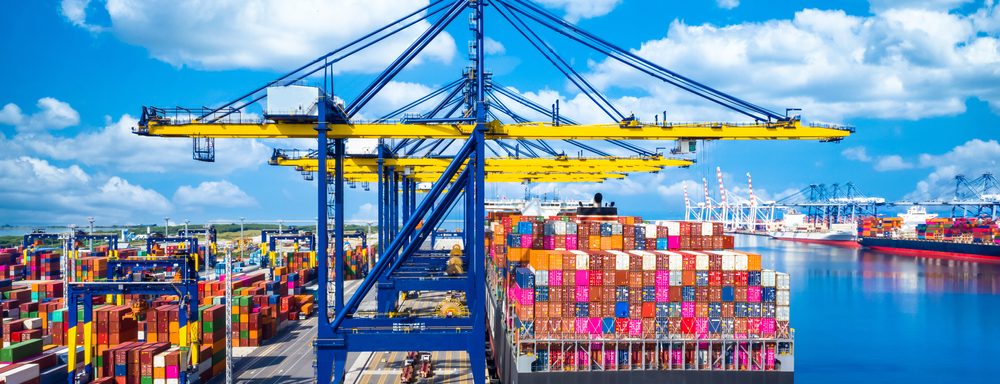Ocean freight, like all other sectors, has been experiencing backups, shortages and price surges from the onset of the COVID-19 pandemic. Unfortunately, while some industries appear to be bouncing back, ocean freight may have a longer road to recovery: experts believe these supply chain issues will continue until at least halfway through 2022.
Due to the large backups at major U.S. ports, where roughly 77 ships carrying $24 billion worth of goods have sat waiting for longer than five days, shipping a container now takes 3x longer than normal. One-third of the containers at L.A. and Long Beach ports sat waiting for longer than 5 days in September, according to Goldman Sachs.
These issues have ultimately arisen due to a major shift in how consumers spend during the pandemic; rather than spending money on services such as travel, entertainment or dining, consumers are spending far more money on goods, including electronics, household items, groceries and more. This has resulted in a massive uptick in shipping demand that the U.S. supply chain was simply not prepared for.
The current strain is expected to ease after the holiday season passes, but only slightly, says Goldman economist Ronnier Walker.
“Backlogs and elevated shipping costs are likely to persist at least through the middle of next year because no immediate solution for the underlying supply-demand imbalance at US ports is available,” Walker said.
While President Biden’s solution to the problem – ordering ports to remain open 24/7 – has helped marginally, Walker notes that ongoing labor shortages and a lack of coordination among major players in the supply chain will continue to contribute to the disruptions.
“Congestion will likely persist to some extent through at least the middle of next year, and our analysts expect that freight rates will likely remain meaningfully above pre-pandemic levels for at least the next year,” Walker stated.
Elsewhere in the world, Hans Nagtegaal, Director Containers Port of Rotterdam, seconded the notion that the situation is unlikely to resolve until 2022, and will require greater container line schedule reliability.
“We see that the lead time and also the dwell times on the terminals are further and further increasing and it creates a large backlog. In Rotterdam, for instance to give you an example, the average dwell time for a container has moved from four to about seven days,” Nagtegaal explained. He compared the supply chain to “gears or cogs that have become tightened together and need oil to allow them to run smoothly again.”
“We actually need some oil, and the oil that we need is schedule reliability,” Nagtegaal said.
In the meantime, the strain on shipping capacity will continue to put pressure on other parts of the economy, ultimately leading to higher prices for consumer goods. “Consumers will pay more and have access to less,” writes CNBC author Jeff Cox.
According to Pantheon Macroeconomics Ian Shepherdson, the pendulum should eventually swing back, with the U.S. returning to a more balanced services-and-goods-based economy. Shepherdson noted that with an eventually decrease in demand for goods, there will be a “period of rapid declines in goods prices,” but he would be surprised to see that before the middle of 2022.


